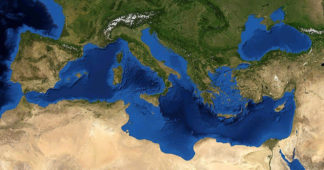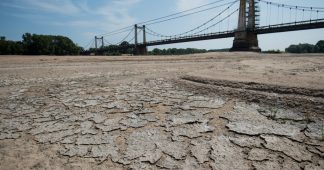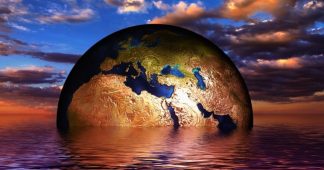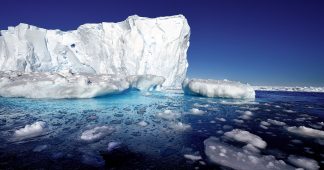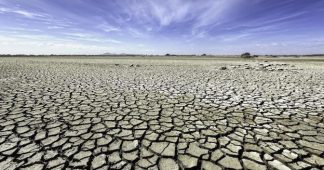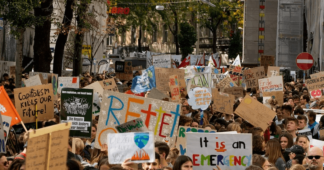Does anyone out there still believe that our current system of growth at all costs is symbiotic with our existence?
By Simon Whalley
Jan 26, 2023
With the warmer El Niño climate pattern about to replace the colder La Niña in the Pacific Ocean at the end of the year, we are about to get a real glimpse into our collective future. While our governments have been pretending to focus on a distant 2050 target to limit warming to 2.7°F (1.5°C), there is a 50:50 chance that we will reach the landmark temporarily by next year. Sadly, this isn’t the extent of our problems. In 2009, scientists from the Stockholm Resilience Center identified nine planetary boundaries: including climate change – whose thresholds we could not cross if we wished to continue with human civilization. Spoiler alert: humanity is not listening.
In 2009, when the boundaries were first established, we had already passed three of the nine boundaries—climate change, biodiversity loss, and excess nitrogen and phosphorus. With our current policies, we are on course to increase the global average temperature by as much as 6.5°F (3.6°C) by the end of the century. This doesn’t take into account the potential feedback loops and tipping points that many scientists predict will considerably worsen at 3.6°F (2°C) and potentially lock us in to a hothouse Earth scenario. Without urgent action to reduce emissions, we are forecast to pass 2.7°F (1.5°C) by 2032 and then 3.6°F (2°C) by 2043. This increased temperature has already led to heatwaves like the one that killed 53,000 people in Europe last summer. It’s leading to more severe storms, increased flooding like we saw in Nigeria and Pakistan last year, and longer and more frequent droughts like those in the U.S. Midwest and large parts of sub-Saharan Africa. It’s also leading to the rapid melting of Greenland and Antarctica, and it has been forecast that we could see several meters of sea-level rise as soon as 2066. This will affect all food production, with wheat harvests expected to decrease by 37% at 3.6°F (2°C) of warming, corn harvests projected to decrease by up to 18%, and soybean harvests projected to decrease by 12%. These are the most common crops grown on our planet. Some prominent climate scientists predict that at 7.2°F (4°C) of warming, the planet will be able to support less than 1 billion people. Our human population is expected to reach 10 billion by 2050 at the same time that our food production is decreasing.
As if things couldn’t get any worse, through changing our climate, and industrial farming, we have also begun the sixth extinction event with as many as 273 species becoming extinct every single day. This is the second boundary we have crossed—biodiversity. Since 1970, human activities have led to a 69% drop in wildlife populations. Freshwater fish populations have declined by 76%, with the oceanic fish population declining by half since 1970. Every species has a vital role to play in a healthy ecosystem, and removing one species has knock-on effects. As one example, when sharks are removed from an ecosystem, sea turtles wipe out seagrass, which provides habitat for species like fish, shellfish, and birds. Seagrass is also a huge carbon sink. Shark populations have declined by 71% since 1970. Everything on our planet is interlinked, and our ecosystems have taken 4.5 billion years to evolve into their current state. By 2100, it is predicted that there will be no more insects on our planet.
A rather inconvenient truth for many is that the biggest cause of biodiversity loss is our love of eating other animals. Overall, it is estimated that 60% of species loss is due to animal agriculture. In simple terms, meat-based diets use 75% more land than plant-based diets. Today, humans and the animals we keep for food account for 96% of all mammals. Only 30% of birds are free to fly, with 70% of birds kept in factory farms. Additionally, there are considered to be 362 megafauna species, including gorillas, elephants, rhinos and giraffes. Of these, 70% are decreasing in numbers with 59% threatened with extinction. 98% of these animals are threatened by hunting for their meat.
The third boundary crossed by 2009 was excess nitrogen and phosphorus. While these are essential for growing food, since the 1970s we have been growing our food using synthetic nitrogen and phosphates, and this has created an imbalance in our systems. Additionally, waste from farm animals, along with synthetic nitrogen and phosphorus, has led to eutrophication of our rivers, where algae grows, removing the oxygen from the water and causing the fish to suffocate. This has knock-on effects for all species in the ecosystem. These rivers then discharge into the oceans, creating dead zones where nothing lives.
Scientists released an update to the boundaries in 2015, and they discovered that another had been crossed: land system change. As our population increases, we need more land for growing food. Additionally, as people become more affluent, they increase their meat and dairy consumption. Between 1961 and 2011, 65% of land use change was caused by animal agriculture. About 70% of the deforested parts of the Amazon rainforest are now being used to graze cows while the remaining 30% is mostly used for growing soy beans —which are fed to factory-farmed animals.
In an interview for Globalizations journal in 2021, Will Steffen—co-author of the planetary boundaries framework, declared that it was possible we had also passed the safe boundary for ocean acidification. The oceans absorb around a quarter of all our CO2 emissions, and when CO2 dissolves in water it lowers the water’s pH. This leads to the acidification of our oceans. Our oceans’ pH value has decreased from 8.11 to 8.06. This may not sound much, but pH levels are logarithmic, which means they have decreased by around 30%. More alarmingly, reef development is believed to stop at pH 7.8. Reefs are breeding grounds for many types of fish and support around a billion people worldwide. Coral reefs only account for 0.2% of seafloor but they sustain around 25% of marine life.
Further research in January 2022 found that the chemical pollution boundary has now been crossed. One of the main chemicals added to our planetary system has been plastic, whose weight is now double that of all the planet’s marine and land-based animals combined. Less than 10% of plastic has been recycled, and it is estimated that there will be more plastic in the ocean than fish by 2050. Many people will have seen the photo of the turtle with a plastic straw in its nostril, but the real cause of oceanic plastic pollution is not drinking straws, it is the industrial fishing industry. In what is called the Great Pacific Garbage Patch, between 75 and 86% of plastic is abandoned fishing gear. Dolphins, whales, turtles, and sea birds get tangled in the web of plastic and either drown or starve to death. This ghost gear amounts to 3,000 km2 of gill nets, 740,000 km of long lines, and 25 million pots and traps. Around 2% of fishing gear is lost each year, and at the current rate, the amount of stray fishing nets will be able to cover the surface of Earth within 65 years.
According to further research in April 2022, the planetary boundary for green water has been passed. Green water is the water that makes its way into the soil and is available to plants. Additionally, we are being warned that by 2030, our demand for water is expected to outstrip supply by 40% and half of humans will face severe water stress.
If the ocean acidification boundary has been crossed, then we have now crossed seven of the nine boundaries. The eighth boundary is atmospheric aerosol pollution. Since the industrial revolution, we have doubled the amount of aerosols in the atmosphere. If we were to remove all aerosols today, it is possible the Earth could warm by between 0.5°C and 1.1°C as the aerosols in the atmosphere have been reflecting the Sun’s energy. They can also affect rainfall patterns. Many aerosols are toxic, and today 97.3% of humans are regularly inhaling toxins, which are currently responsible for around 10 million deaths every year. It is possible we have already crossed this boundary, but it has yet to be quantified.
The final boundary is the ozone layer, which has been recovering since the 1980s. Unfortunately, one of the solutions to the climate crisis being given serious consideration is spraying sulfur dioxide into the atmosphere to mimic volcanic eruptions, which cool the planet in the short term. Research suggests that this will lead to the destruction of the ozone layer if it is attempted. In this scenario, we will have crossed every single one of the nine planetary boundaries that scientists state we cannot cross.
So, for the big question: is it possible to live outside the nine boundaries? A United Nations report this year found that if we continue to push past these boundaries then total societal collapse is a possibility. A 2019 report warned that we face societal collapse by 2050. The paper states “To reduce or avoid such risks and to sustain human civilization, it is essential to build a zero-emissions industrial system very quickly. This requires the global mobilization of resources on an emergency basis, akin to a wartime level of response.” Can anyone see such a response? A study in 2014 found that if we continue business as usual then “a relatively rapid fall in economic conditions and the population could be imminent.”A report in 2020 stated that based on current deforestation levels, humanity has less than a 10% chance of avoiding “catastrophic collapse.” What each of these reports makes clear is that we cannot continue to treat the planet as a never-ending resource. They are simply warnings. We still have the power to change the way we live, but we are fast running out of time.
Now, how have we arrived in this situation? Surely our elected leaders have our best interests at heart? We do live in democracies after all, don’t we? The truth is, governments pressured the Intergovernmental Panel on Climate Change (IPCC) to remove any mention of the urgency for a rapid transition to non-fossil fuel energy, and instead their policies rely on unproven carbon capture and storage technology, which may be viable at some point in the future. Argentina and Brazil also requested the IPCC not to mention the benefits of adopting plant-based diets so they could continue to burn rainforests to the ground to graze cows and grow soybeans for the planet’s factory-farmed animals. Unfortunately, the IPCC reports are watered down by governments and industry. As an example, the 2022 IPCC report mentions systemic change 44 times in 2193 pages, but all but one mention was removed in the summary for policy makers.
In one way, our lack of response to our predicament is baffling, but with the media filter largely owned or funded by the billionaires and corporations profiting from the destruction, it is less baffling. Does anyone out there still believe that our current system of growth at all costs is symbiotic with our existence? Surely, the number of proponents of this fallacy must be dropping by the day. At this stage, many will ask “Well, what can we do?” This is not a question our ancestors ever asked. Just ask the suffragettes, the abolitionists, the civil rights activists, or the war veterans. They gave up their lives for the greater good. Today, we aren’t required to give up our lives at all. We are simply required to act to protect them. Many have argued against civil disobedience by saying they agree with the protesters, but not their style of protest. Extinction Rebellion have taken heed and decided to use less disruptive tactics in their next action in April. Isn’t it time to join them in the streets?
We remind our readers that publication of articles on our site does not mean that we agree with what is written. Our policy is to publish anything which we consider of interest, so as to assist our readers in forming their opinions. Sometimes we even publish articles with which we totally disagree, since we believe it is important for our readers to be informed on as wide a spectrum of views as possible.
